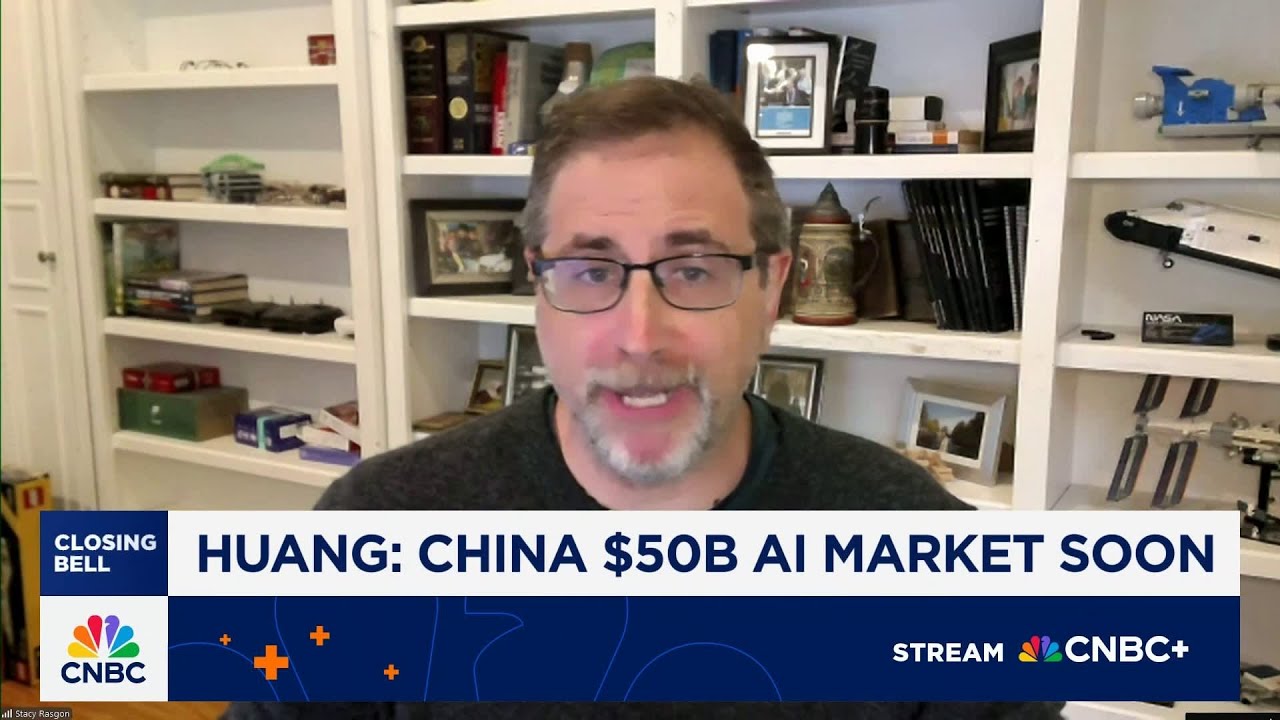Bernstein’s Stacy Rasgon highlights that China’s rapidly growing $50 billion AI market is crucial for Nvidia, but restrictions may lead to Huawei capturing the space if Nvidia is barred from operating there. Despite these challenges, Rasgon remains optimistic about Nvidia’s global growth prospects, emphasizing the industry’s overall expansion and China’s ongoing AI advancements.
In the video, Bernstein Research’s chip analyst Stacy Rasgon discusses the potential impact of China’s AI market on Nvidia and the broader industry. He highlights that China is expected to become a $50 billion AI market within the next two to three years and emphasizes the importance of Nvidia’s ability to compete there. Rasgon expresses concern that if Nvidia is restricted from participating in China’s AI sector, the market could be effectively handed over to Huawei, which has developed its own competitive chips. He views this as a significant missed opportunity for Nvidia and the global chip industry.
Rasgon agrees with Jensen Wang’s perspective that it would be a shame if Nvidia couldn’t operate in China, especially given the country’s rapid development of local AI chips. He notes that China is likely to continue advancing its AI capabilities regardless of restrictions, and that Huawei is already making strides with its own hardware. Rasgon points out that recent bans, such as the H20 ban, have already impacted Nvidia’s ability to sell certain products in China, which has led to a decline in the competitiveness of their offerings compared to Huawei’s. He suggests that China will find ways to bypass restrictions, making it difficult for Nvidia to fully capitalize on the market.
Despite these challenges, Rasgon believes that Nvidia can still thrive without China, as the overall AI market is large enough to sustain growth. He acknowledges that Nvidia may need to adapt to regulatory constraints and redesign products to meet Chinese rules, which could limit their competitiveness there. However, he emphasizes that the global AI market is expanding rapidly and that Nvidia’s opportunities outside China remain substantial. Rasgon views the Chinese market as a significant but not the sole driver of Nvidia’s growth prospects.
He also comments on the broader semiconductor industry, noting that recent spending trends among hyperscalers like Meta indicate continued investment in chip infrastructure. Rasgon observes that companies are maintaining or increasing their capital expenditures despite concerns about potential peak spending or tariffs. This signals confidence in the long-term growth of the industry, with companies willing to invest heavily in AI and data center technologies, which bodes well for chip manufacturers.
Overall, Rasgon underscores the importance of China in the global AI landscape but remains optimistic about Nvidia’s prospects worldwide. He criticizes the effectiveness of current bans, suggesting they may only slow China’s progress rather than stop it. While acknowledging the challenges posed by restrictions, he believes Nvidia can continue to grow and innovate, leveraging the expanding AI market globally. The key takeaway is that geopolitical restrictions are a concern but not a definitive barrier to Nvidia’s long-term success.
